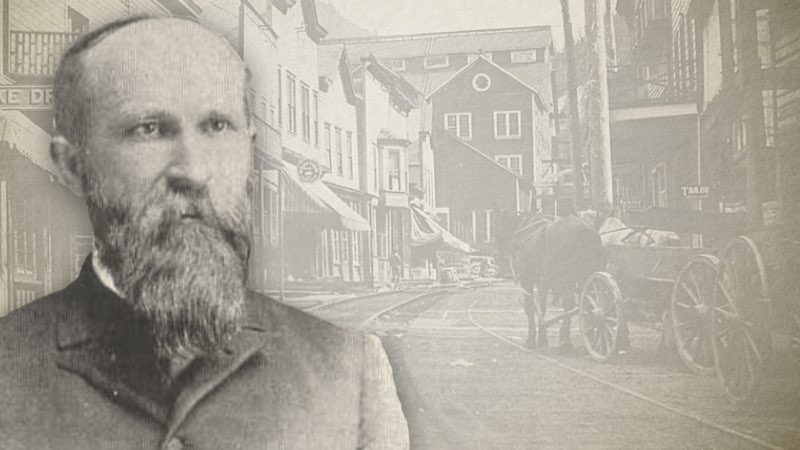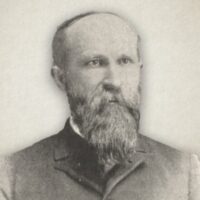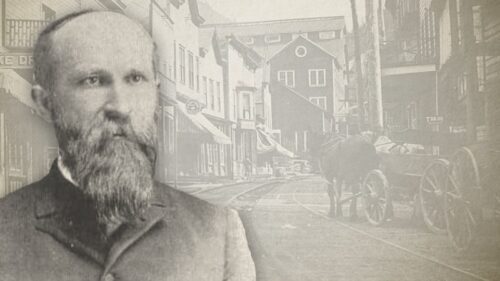
Chapter 18: Baptists in America
The origin of the Baptists in America is not traceable to any one man or set of men. They came here singly and in groups. By comparing their articles of faith a unity of doctrine was discovered and churches were formed. Baptist churches are always formed just in this way. A few individuals, having been previously baptized, and holding membership in some Baptist church, come together and adopt a church covenant and articles of faith, and are then ready to transact business, such as the election of officers for the church, the reception of members, etc., as did the church of Jerusalem just before the day of Pentecost.
It has been charged, but very unjustly, that Roger Williams was the founder of the Baptists in America. The scope of this work forbids my entering upon a discussion of this question, and the reader is referred to Ray’s Baptist Succession, and especially to a recent work entitled, First Baptist Church in America, by Graves and Adlam, for a full refutation of this charge. It is a fact that Roger Williams never held membership in a regular Baptist church a day in his life. It is also a fact that the church which he organized ceased to exist four months after its organization, and, to use the expression of Cotton Mather, a Congregational minister, with reference to it, “the church came to nothing.” That is to say, no other church ever grew out of it.
Had this not been the case, our history would not have been affected in any way, for we trace it through many different lines to the English and Welsh Baptists.
The first Baptist church in America was established in Newport, R. I., by Dr. John Clarke, and his co-laborers, in the year 1638. A note in the Philadelphia Baptist Association, p. 455, reads as follows: “When the first church in Newport, Rhode Island, was one hundred years old, in 1738, Mr. John Callender, their minister, delivered and published a sermon on the occasion.” This places the organization of the church in 1638. The church still exists with its original constitution.
Dr. John Clarke, the first pastor of this church, was a regularly ordained Baptist minister when he came to America from England, and did more than any other man to secure civil and religious liberty to the colony of Rhode Island, which was afterwards extended to the whole of the American colonies.
Rev. John Callender, the historian of Rhode Island, says of John Clarke: “He was a faithful and useful minister, courteous in all the relations of life, and an ornament to his profession and to the several offices which he sustained. His memory is deserving of lasting honor, for his efforts towards establishing the first government in the world which gave to all equal civil and religious liberty. To no man is Rhode Island more indebted than to him. He was one of the original projectors of the settlement of the island, and one of its ablest legislators. No character in New England is of purer fame than John Clarke.”
Dr. J. R. Graves, in his “First Baptist Church in America,” states that he visited Newport in the year 1854-5, for the purpose of learning the claims of the first Baptist church of Newport to be the oldest Baptist church in America, and while there, in company with Dr. Adlam, he visited the neglected grave of Dr. Clarke. Digging away a mould which had accumulated at the foot of his tombstone he read as follows:
To the Memory of Doctor John Clarke,
One of the original purchasers and proprietors of this island and one of the founders of the First Baptist Church of Newport, its first pastor and munificent benefactor; He was a native of Bedfordshire, England, and a practitioner of physic in London. He, with his associates, came to this island from Mass. in March, 1638, 0.8., and on the 24th, of the same month obtained a deed thereof from the Indians. He shortly after gathered the church aforesaid and became its pastor. In 1651, he with Roger Williams, was sent to England, by the people of Rhode Island Colony, to negotiate the business of the Colony with the British ministry. Mr. Clarke was instrumental in obtaining the charter of 1663, from Charles II., which secured the people of the State free and full enjoyment of judgment and conscience in matters of religion. He remained in England to watch over the interests of the Colony until 1664, and then returned to Newport and resumed the pastoral care of his church. Mr. Clarke and Mr. Williams, two fathers of the Colony, strenuously and fearlessly maintained that none but Jesus Christ had authority over the affairs of conscience. He died April 20th, 1676, in the both year of his age, and is here interred.
Dr. Clarke continued to be the pastor of the first church of Newport until his death, a period of thirty-eight years, less the time he was absent in England. This church is now more than two hundred and fifty years old, and from it numbers hare gone out into the West and South to form other churches.
In the year 1665, a Baptist church was organized at Charlestown, near Boston, but was afterwards moved into the city, and was considered the first Boston church. Rev. Thomas Gould was the first pastor and was succeeded by Isaac Hull. John Emblem was sent for from England, and became co-pastor with Mr. Hull, in 1684.
In the year 1714, Robert Nordin and Thomas White were ordained in London, having been written for by the Virginia Baptists, and sailed soon after. White died on the way, but Nordin arrived in Virginia and gathered a church at a place called Burley in Isle of Wight county. There were, says Mr. Benedict, probably a number of Baptists settled in this place before the arrival of Nordin, by whose request, and for the service of whom, he and White were ordained.
There was another Baptist church in the Isle of Wight county and also one in Surry county soon after this time. Benedict quotes Mr. Palmer as follows:
“There is a comely little church in the Isle of Wight county, of about thirty or forty members, the elder of which is one Richard Jones, a very sensible old gentleman, whom I have great love for. We see each other at every yearly meeting, and sometimes more often. There is another church in Surry county, where my brother Jones lives, I suppose of about thirty more.”
Mr. Ray says of the same man: “Richard Jones, a Baptist preacher from England, settled in Virginia in 1727, where he labored thirty years in the ministry. He labored in the field previously occupied by Robert Nordin, who preceded him as the pioneer Baptist of the Old Dominion. The succession of the Virginia Baptists is back to England.”
Mr. Ray further says: “Casper Mintz came from England and settled in Virginia in 1727. He spent about thirty years in the ministry. He was the associate of Richard Jones; they both arrived in Virginia in two years after the death of Robert Nordin.”
John Miles, with several Baptists, came from Swansea, Wales, in 1663, and organized a church in Massachusetts, which was also called Swansea. This is the oldest Baptist church in Massachusetts. Elder Miles was one of those faithful ministers of Jesus Christ who suffered persecution under Charles II., and also in Massachusetts. So we find that the first Baptist church in the Bay State was regularly organized by a Baptist preacher from Europe.
Samuel Jones, of South Wales, with a number of other Baptists, emigrated to America in the year 1686, and settled on the banks of the Pennepek, in Pennsylvania, and went into church organization at that place.
Abel Morgan of Wales, who was an influential Baptist minister and pastor in his native country, arrived in America in 1711, and took the care of the church in Philadelphia. He was a man of learning and compiled a folio concordance to the Welsh Bible which was printed in Philadelphia in 1730.
There was a Baptist church organized in Wales and came to America as an organized body with its pastor in the year 1701, of which Mr. Kay gives the following account:
“Thomas Griffith, from South Wales, emigrated with the church of which he was pastor, in the year 1701. They settled at first near Pennepek, in Pennsylvania, (now Delaware), in 1703. This church was organized in Wales in 1701, on sixteen members. They sailed in church capacity, on board the ship James and Mary. Here we have a whole church, with their pastor, emigrating to this country; they kept up their regular church meetings while crossing the billows of the Atlantic ocean. And after its settlement at Welsh Tract, it sent forth quite a number of able ministers, who aided in planting our American churches. Among these may be mentioned Elisha Thomas, Enoch Morgan, Jenkins Jones, Owen Thomas, Abel Morgan and David Davis. The editor of the Minutes of the Philadelphia Association remarks, ‘That this church appears to be very singular in its first settlement, and hath been the best supplied with ministers of any church belonging to this association.'”
This old Welsh Tract church sent off branches in various directions to form new churches. Mr. Backus says that the Baptists in Pennsylvania had increased to ten churches and 668 members in 1770.
As early as 1737, the Welsh Tract church, in Pennsylvania, lettered off thirty members who settled on the Pedee river, in South Carolina, and formed a church there which they called Welsh Neck.
In the year 1813, Saw Mill church, South Carolina, was organized direct from “Welsh Neck church, using the same covenant. Elder William Dorsey was at that time pastor, both of Welsh Neck and Saw Mill churches and baptized into the latter church James Fields, his wife and daughter.
In 1832, James Fields, his wife, Mrs. Julia Fields, and their daughter, Miss Elizabeth Fields, moved from South Carolina to Gibson county, Tennessee, taking their letters with them from Saw Mill church and, with seven other persons, entered into the constitution of Spring Hill church, Using the covenant and constitution of Saw Mill church, South Carolina.
Elders Hugh Smith and Z. N. Morrill were present and aided in the organization of Spring Hill church, Tennessee. Elders L. H. Bethel, J. W. H. Mays, A. Wade, Jessee Jolliff and Scion Skipper were all ordained to the ministry by this church. Elder Z. N. Morrill held membership with it and was its first pastor. He continued in this relation until he moved to Texas in 1835, where his labors were abundantly fruitful. He went into the first missionary Baptist church ever organized in Texas, and became its first pastor. He entered into rest at a ripe old age, December 19th, 1883.
From Spring Hill church, Tennessee, the following churches were constituted: Bethel, McCollough’s Chapel, Poplar Grove, Quincy, Hickory Grove, Trenton and Dyersburg.
In 1844, Spring Hill church extended “an arm” across the Mississippi river into Missouri, which doubtless grew into an organization, though the records only mention this much.
These churches, growing out of Spring Hill church, have sent out their colonies in the same way the mother church did, and have also ordained and sent out ministers into other fields. Elders W. C. Grace, of Knoxville, Tenn., and J. G. Doyle, of Arkansas, were both ordained by Bethel church.
The West Tennessee State Convention was organized at the Spring Hill church in 1834.
I have entered into these details to show how, in a thousand ways, if the records had been preserved we might trace our history back to the very days of the apostles. Here is a line of history traced church by church, and from present, living men, back to Wales.
The Virginia Baptists, mostly, originated from the English Baptists, and these churches in Virginia sent colonies throughout the Southern and Western States, from which other churches grew, and thus Baptist doctrines have been preserved and perpetuated throughout America.
In the year 1767, a Baptist church was organized in Spottsylvania county, “Virginia, as one of the fruits of the labors of Lewis Craig. Three years after the organization of this church Lewis Craig became its pastor. The church was at first called Upper Spottsylvania, but was afterwards known as Craig’s Church.
In the year 1781, this entire church with its pastor, moved from Virginia to Kentucky. Prof. Ranck, speaking of the exodus, says: “Not only the members, but nearly everything else pertaining to Craig’s church was going. Its official books and records, its simple communion service, the treasured old Bible from the pulpit—nearly everything in fact but the building itself was moving away together—an exodus so complete that for several years Upper Spottsylvania church was without either congregation or constitution.”
The church at the old site was afterwards reinforced by new members, resumed its constitution, and maintains existence to the present day.
It was in the month of September, 1781, that this “Traveling Church” took up its march to the “dark and bloody ground.” It would halt on Sunday and rest and worship in the silent groves of the then “wild west,” and on Monday break up camp and resume the march. Several months were consumed in making the journey, and when the regular meeting day for business came, the moderator, Elder Lewis Craig, would call the church in conference, a sermon would be preached, opportunity for membership in the church would be given, and the clerk would make a record of the business transacted. When this was done the company—for there were many persons besides the members of the church in the crowd—would proceed on its weary journey. The church continued in this way until it reached Kentucky, where they raised the standard of divine truth, and the church was known as Gilbert’s Creek.
Prof. Ranck, an Episcopalian, has recently published an admirable history of the travels of this church from Virginia to Kentucky, in which he says: “Spurred on by cold weather and dire necessity the sturdy Baptists quickly made a ‘clearing’ in the leafless woods at Gilbert’s creek and established ‘Craig’s Station,’ on land afterwards owned by John Simpson, and there in that lonely outpost, before the close of the second Sunday in December, 1781, they had gathered and worshipped around the same old Bible they had used in Spottsylvania and had been preached to by their pastor, Lewis Craig, and by William Marshall, uncle of the celebrated Chief Justice Marshall of Virginia.”
There was a number of Baptist preachers who went from Virginia to Kentucky in this company, among whom were Joseph Bledsoe, Joseph Craig, William Cave and Simeon Walton. These had been preceded to Kentucky by William Hickman, Thomas Tinsley, and perhaps other Baptist preachers, as early as 1776.
Beaver Dam church, Ohio county, Kentucky, is one of the oldest churches in that State, it having been constituted as early as 1798. Some of its members lived twenty miles distant, but were regular in their attendance. They would leave their homes on Friday afternoon, many times on foot, and go part of the way, stopping to hold prayer meeting at night with some brother on the road. The journey would be finished the next morning in time for the eleven o’clock sermon. There would be preaching on Saturday both in the morning and at night, also on Sunday at eleven o’clock and at night. Monday morning the members living distant would return to their homes. There were conversion and baptisms at almost every meeting of the church. If such were not the case the members would consider the church in a very luke-warm condition, and the next meeting was usually preceded by fasting and prayer.
Such consecration and earnestness would no doubt be attended with like results at the present day. The indifference of many church members to the interests of their church work is a sad commentary upon their profession.
The Welsh Neck church, South Carolina, already referred to was not the beginning of Baptist history in that State. Mr. Backus says: “When Elder William Scraven was cruelly persecuted in the province of Maine, in 1682, he went to Charlestown, in South Carolina, and became pastor of a Baptist church there.” In a letter written August 6th, 1708, Mr. Scraven states that his church in Charlestown numbered about ninety members.
It is not, however, the purpose of this work to give a detailed history of American Baptists, but merely to show their origin in America, and their succession, mainly from the English and Welsh Baptists. Enough has been written for this purpose, for we have seen that Baptists coming singly and in colonies, settled first in New England, Virginia and South Carolina, and then spread throughout the West and South.
Author of the “Compendium Of Baptist History”. Please inform the Editor of the AHB (via the Contact page) if you have biographical information on this author. Thank you.
Shackelford on Baptist History (Complete)




